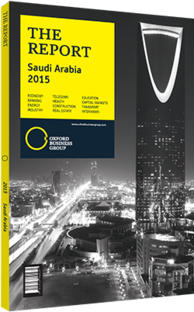Saudi Arabia's exchange is poised to benefit from international investment
The opening up of the GCC’s stock exchanges to foreign investment has been a salient feature of market commentary in recent years. The global economic crisis sent shockwaves through regional exchanges and, in the ensuing period of depressed trading, regulators around the Gulf embarked upon a market reform effort in a bid to attract scarce liquidity. The accession of both Qatar and the UAE to emerging market status by the influential indexer MSCI in May 2014 was a reward for this effort, but even as the decision was being put into effect, the attention of many global investors was already turning to Saudi Arabia. The Saudi Stock Exchange’s market capitalisation is larger than that of the Mexican Stock Exchange and almost as big as the rest of the GCC combined; the prospect of gaining access to it has tantalised global investors for decades.
A New Era
The Capital Market Authority (CMA) opened up the market to qualified foreign investors (QFIs) in June 2015, heralding a new era of increased foreign investment in the Saudi Stock Exchange. This is in line with CMA’s efforts to increase institutional investments in the market according to its strategy for the 2015-19 period. One of the principal objectives of the CMA in adopting the QFI model is to reduce exchange volatility. Around 90% of trading volume on the Saudi Stock Exchange is accounted for by retail investors, which generally have larger risk appetites and shorter investment horizons than their institutional counterparts. As a result, the 10-day trading volatility of the Tadawul All Shares Index (TASI) is around 2.3 times that of the S&P 500 Index and 1.7 times that of the Bombay Stock Exchange, according to Jadwa Investment. By inviting foreign institutional investors to participate directly in the market, the CMA is hoping to reduce the role of retail investors on the exchange, thereby lengthening the aggregate investment horizon of its participants. For many observers, reduced volatility and a general enhancement of market processes represent the biggest potential improvements that the new rules may have on the Kingdom’s capital markets.
“The QFIs will bring expertise, professionalism and critical assessment of investment opportunities, which will probably raise the bar for investors, analyst, companies and even the regulator,” Abdullah A Alawi, the assistant general manager of research at Aljazira Capital, told OBG. “This is a positive development.”
Attractive Prospects
The appeal of the Saudi market for foreign investors is considerable. “The opening will offer a great chance for foreign institutional investors to take advantage of the Middle East’s largest market. We expect to see capital gradually flowing in over the next few years, with a cautious approach in the first year,” Ahmed Al Jasser, managing director of KSB Capital, told OBG. The Kingdom’s ambitious development strategy, continued government spending, and a large and expanding consumer base make it an attractive market at the macroeconomic level.
At the sector level, foreign investors have been drawn to industries in which government subsidies have made for tempting value propositions. For example, the petrochemicals sector has garnered interest due to the fact that listed companies benefit from low natural gas prices, which have helped to keep margins healthy regardless of fluctuations in the end price of the product. Meanwhile, the telecoms sector, although of reduced interest in 2015 due to performance issues, receives preferential treatment in terms of tariffs and taxes. The Kingdom’s support for these and other activities, such as health care initiatives, has produced a plentiful supply of investment opportunities in which robust margins are supported by government policy.
The absence of a capital gains tax and a low withholding tax rate of 5% on dividend payments also act as incentives for QFIs. For many investors, part of the exchange’s appeal stems from the anticipation of its next strategic move. Should Saudi Arabia secure a place on the MSCI Emerging Markets Index, it is likely to be granted a weighting of around 4%. The amount of passive funds that this development would result in makes an MSCI upgrade a desirable outcome for the CMA.
You have reached the limit of premium articles you can view for free.
Choose from the options below to purchase print or digital editions of our Reports. You can also purchase a website subscription giving you unlimited access to all of our Reports online for 12 months.
If you have already purchased this Report or have a website subscription, please login to continue.

